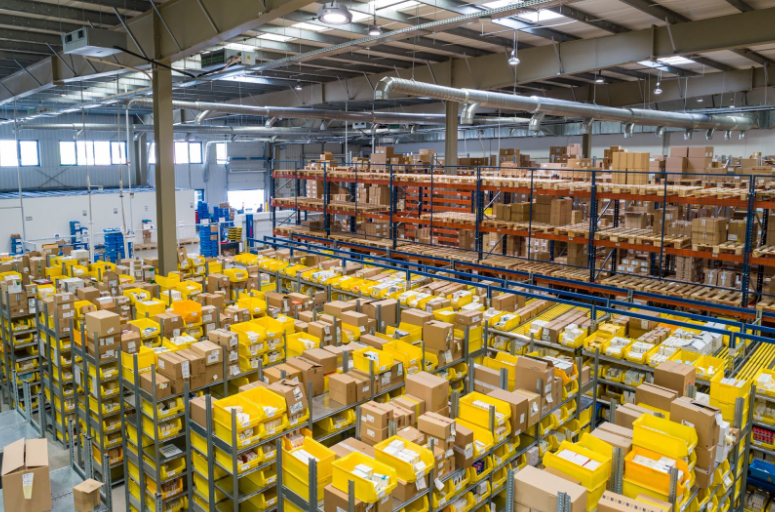Logistics Optimization: Importance, Process, and Optimization

Supply chain management refers to all the steps necessary to ensure goods reach their destinations. Consumer expectations have increased steadily, requiring companies to operate supply chains as effectively as possible to meet the demands of commerce.
Logistics optimization is a strategy that companies implement to meet the growing demand for fast and efficient supply chain operations. This strategy focuses on different aspects of the supply chain and identifies optimization opportunities for different supply chain stages. Logistics optimization is intended to reduce costs across the supply chain, decrease lead times, and enhance customer satisfaction.
This article provides an overview of logistics optimization, how it works, and the benefits that companies gain by using logistics optimization.
What Is Logistics Optimization and Why Is It Important?
Logistics optimization is finding the most efficient and cost-effective way to plan, organize, and execute the movement of goods and services from one location to another.
Each step in the supply chain has its unique characteristics and potential problems, such as inventory levels that are too high or too low to meet customer demands, shipment deliveries being delayed, and damage to products during transport.
Logistics optimization focuses on each of these issues, combining technology, data analysis, and other tools to identify the most efficient distribution networks. One potential outcome of logistics optimization is reduced fuel costs as shipments are routed to avoid empty miles.
Businesses can optimize logistics costs, improve delivery times, and increase customer satisfaction using logistics optimization tools and strategies. Companies can also help reduce transportation’s environmental impact through route optimization by identifying the most fuel-efficient routes and modes of transportation.
How To Effectively Manage Supply Chain Logistics

To manage your logistics processes effectively, you must have a comprehensive view of the entire supply chain and the supply network supporting it. This perspective can include any number of stakeholders, such as manufacturers, suppliers, distributors, customers, and other third-party services.
To achieve this goal, we recommend that you keep in mind the following:
Establish Clear Goals
The first step in logistics optimization is developing clear goals for each aspect of the supply chain. Setting clear goals helps companies measure the performance of different aspects of the supply chain and make changes that ultimately lead to better overall results.
Factors to consider when planning to implement logistics optimization include:
- What do you want to achieve in terms of time savings, cost reduction, and improved profit margins?
- What is the timeframe?
- What are your constraints?
The answers to these questions will help you determine the logistics optimization services to select and how to use them. Based on this information, companies can build plans to achieve their goals.
Measure Performance
Monitoring the performance of each function and at each stage of the supply chain will empower data-driven decisions. Additionally, this level of performance review allows companies to present issues before they occur and take corrective actions.
There are many ways to measure performance management. Potential metrics may include cost per unit, the speed at which functions are completed, and the number of defects or required re-work.,
These performance metrics help you track your progress toward meeting the broader goals you have set for your supply chain. You can use these metrics to identify areas that need improvement and make the appropriate changes or adjustments in your network to keep every aspect of the supply chain on track.
Customer Feedback
For enterprises to be able to make meaningful adjustments and improvements, they need feedback from the marketplace or their customers. Logistics performance often directly affects a company’s bottom line. Customer feedback can help improve your company’s logistics processes and achieve better results.
To accurately measure customer satisfaction, you must have current information about your customers and their expectations. You can use various techniques, including surveys and focus groups, to understand customers’ pain points and the solutions they are looking for you to provide.
Adjust your supply chain based on the feedback you get from customers. You can test new strategies and procedures that meet customer needs in real-time.
Teamwork
Logistics optimization is a highly collaborative process and can only be successful with a team of people at all levels in your organization. Team members will have to work together to understand the current state of the company’s supply chain and identify potential areas for improvement.
You will need an analyst or team of analysts to develop strategies for improving the supply chain. To make specific changes, you will need engineers who can perform simulations of different scenarios and help design new processes. You may also need different technological resources to assist with your strategy.
7 Ways to Optimize Your Logistics Operations

There are many ways to optimize your supply chain. Each business is unique, so you must devise a plan to fit your operations. The following are seven ways businesses are successfully using logistics optimization today.
Use Logistics Management Software
The logistics industry needs tools that provide visibility into the entire process. A powerful way to optimize logistics operations is by using logistics optimization software.
A logistics management software solution can give actionable insights to help you create efficient plans and simulations, monitor performance at every process step, and compare the results. It helps with forecasting, planning, and other critical activities for effective logistics operations.
Logistics management software can also help you find the best cost-saving options for your supply chain and give you a clear picture of the entire supply chain without missing any steps. It helps create a unified view of the supply chain and provides real-time information about your business operations.
There are various types of logistics and transportation software on the market today. Some solutions are more complex than others. Ensure that the technology solution that you choose has the functionality you need, is easy to use, and has structured implementation processes that meet your timeline.
Improve Communication With all Stakeholders
Effective communication plays a critical role in supply chain management. You need an organizational structure that allows you to effectively share information with other departments or operating units within your company’s supply chain network.
Here are some steps to improve communication:
- Outline the necessary steps to improve communication and address the needs of cross-functional teams.
- Develop transparent, simple processes for team members to follow when working together. As an example, you can use templates for communicating with your suppliers and distributors.
- Find a suitable communication forum that is both accessible and efficient. Your chosen technology can be an in-house system or a cloud-based solution. Ensure the communication process is clearly outlined in a way that every employee understands and follows it.
Reduce Costs
As a supply chain manager, you want to ensure your company meets its financial goals in terms of profit margins and growth. Creating cost-effective plans is critical to optimizing your supply chain. You must find the best prices for the services (like transportation providers) that keep your operation up and running. At the same time, you must ensure providers meet your performance requirements, which ultimately impacts customer service and satisfaction.
You need a logistics strategy that includes operating costs for all supply chain steps, from transportation and storage to timely delivery and fulfillment. The more you know about costs, the better you can plan and budget for shipping and delivery charges, which helps save on operating expenses.
Identify errors or opportunities for improvement in your supply chain as you review each process step. Determine which processes add value to your supply chain and which do not,and focus on the strategies that matter. Logistics companies can cut operating costs by improving internal operations or changing suppliers.
Logistics managers can also use various techniques, such as geographic diversification and consolidation of shipments, to lower transportation costs. Analyze the carriers in your provider network to evaluate which offer low rates but poor service and find the mix of economy and customer service that fits your company.
Invest in Employee Development
A big part of your supply chain management depends on your employees. You must focus on hiring and retaining the best candidates for each position in your company’s logistics or supply chain management functions.
Train and develop your employees to ensure they have the right skills to perform their jobs. Offer different training programs, workshops, and learning opportunities for your team members and help ensure they have the right skills and tools to support your company’s future plans.
Implement a performance evaluation system and steps for future development, and lay out a clear career path, so everyone is on the same page. Performance evaluations should be more than just tracking performance from month to month. Instead, you must look at how each employee contributes to the company’s overall growth and develop a clear guidance plan for future goals.
You can also implement a mentorship program. This approach can help your employees learn from more experienced team members who can provide feedback and advice on improving their performance.
Find Dependable Suppliers
Supply management is another essential part of the supply chain process. You need reliable, trustworthy suppliers to help you improve your business operations.
Develop a supplier scorecard that outlines the criteria for your suppliers and ranks them based on their performance. It will help you identify top-performing suppliers and better understand which ones to use in your business.
You may also want to create a simple way of monitoring supply chain performance with each supplier – like a due date tracker or something more complex. Your Key Performance Indicators (KPIs) should address what’s essential to your company, such as timely delivery or having goods available when you need them.
Use the performance data of previous suppliers to help you decide which suppliers to use going forward. Ask a supplier you are considering to share data about past performance with other companies like yours.
Do research about their history as a supplier and their current operations, strengths, and weaknesses. You may also consider their certifications or accreditations as proof of their competence and commitment.
Have a Contingency Plan
Contingency planning is essential, especially for a supply chain manager. You need to create a contingency plan that ensures your business can continue running smoothly and without interruption.
Identify the challenges you might experience, such as labor strikes, late deliveries, and damage to your inventory. Determine a contingency for each potential challenge. This approach gives you the best chance of staying flexible with your operations and optimizing your supply chain.
You can also use this plan to prepare for other events that may happen in the future. For example, you can create a contingency plan for weather events or natural disasters when they may occur in your area.
Learn From Your Mistakes
Mistakes are inevitable, so it is critical that you analyze root cause issues and use mistakes as an opportunity to learn and improve.
Make a list of the obstacles and hold regular meetings with your team members to discuss these barriers and find solutions. You can also use this information to identify which strategies best fit your company’s goals and how you can achieve continuous improvement across your network.
Final Thoughts
Logistics optimization is a continuous process limited only by your determination, creativity, and commitment. By developing a detailed plan and improving the techniques, you’ll achieve the best results for your supply chain.
Logistics optimization can help you offer better customer service and simplify your operations to reduce logistics costs while increasing revenue opportunities.
